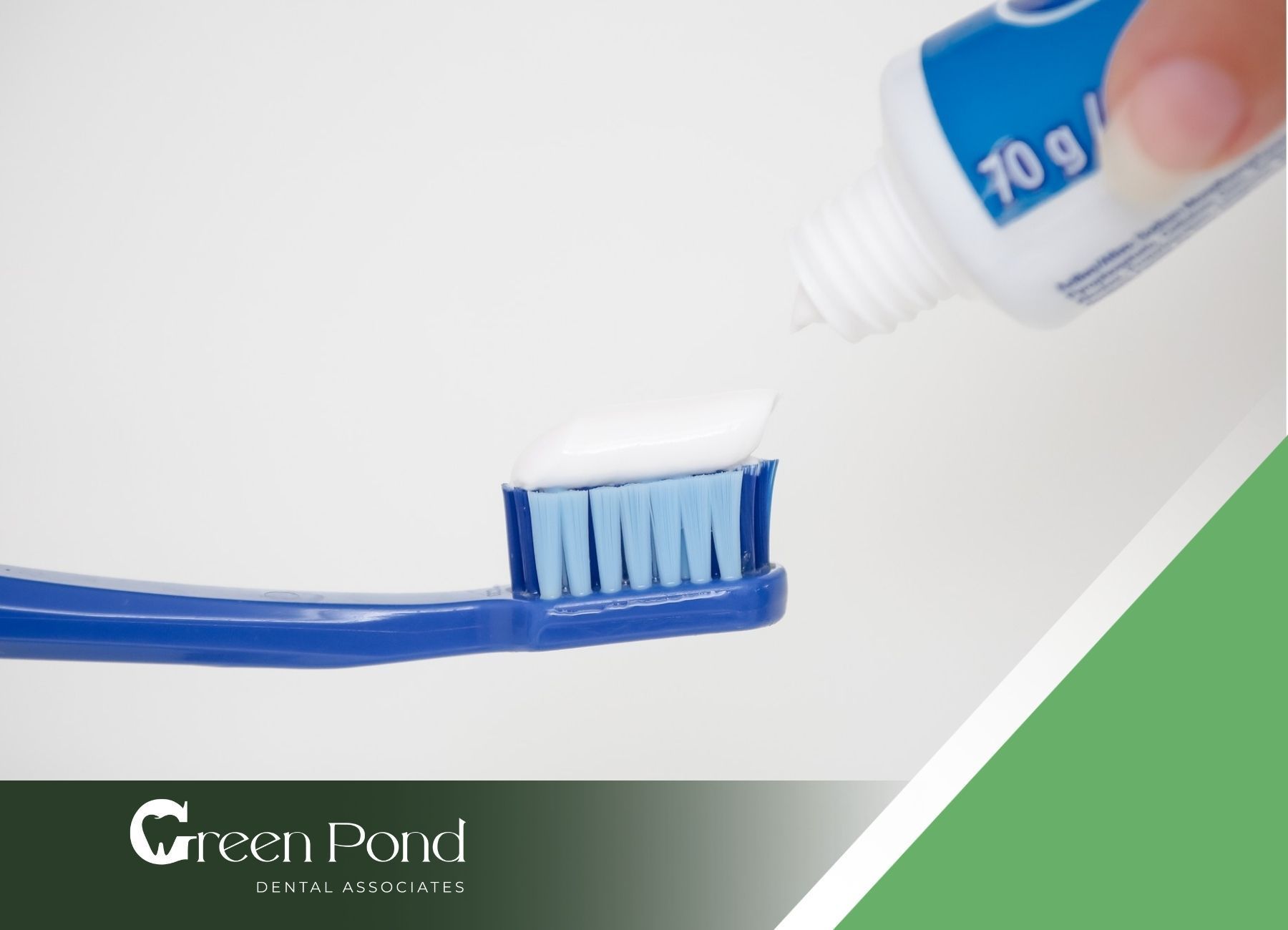Gum Line Cavity: Causes, Symptoms, and Treatments
Cavities are a common dental problem, but those that develop at the gum line can be particularly challenging to detect and treat. Often hidden from view, these cavities can progress rapidly, leading to more severe dental issues.
In this article, we'll explore the causes, symptoms, and treatment options for gum line cavities, empowering you to take proactive steps to protect your oral health. Understanding the nature of gum line cavities is essential for early detection and effective treatment. Let's dive into the details.
Understanding Gum Line Cavities
Gum line cavities are specific types of dental cavities that occur near or beneath the gum line. Also known as a root cavity, is a type of tooth decay that occurs on the root portion of a tooth. This area is typically protected by gum tissue, but when gums recede due to gum disease, the root becomes exposed and vulnerable to decay. Gum line cavities can be particularly challenging to treat and can lead to more severe dental problems if left untreated.
Understanding the causes and susceptibility factors is crucial for effective prevention and treatment of this periodontal disease.
Causes of Gum Line Cavities
Gum line cavities develop primarily due to the presence of bacteria in the mouth. These bacteria feed on sugars from food, producing acid that attacks tooth enamel. Over time, this process can lead to the degradation of enamel, dentin, and even the pulp of the tooth. Key contributors to the formation of gum line cavities include:
- Bacteria: Harmful bacteria thrive in the mouth, particularly in areas with poor oral hygiene.
- Sugar: High sugar consumption provides a food source for bacteria, enhancing their activity.
- Plaque Accumulation: Excess plaque, a sticky film of bacteria, can lead to the destruction of tooth structure if not properly removed.
Gum line cavities can be harmful if left untreated, potentially leading to more severe dental issues.
Susceptibility Factors
Certain individuals may be more prone to developing gum line cavities due to various susceptibility factors. Key factors include:
- Gum Recession: When gums recede, they expose the roots of the teeth, which are more susceptible to decay and sensitivity.
- Poor Oral Hygiene: Inadequate brushing and flossing allow plaque to build up, increasing the risk of cavities.
- Dietary Habits: Frequent consumption of sugary or acidic foods can accelerate tooth decay.
- Age: Older adults may experience more gum recession and enamel wear, making them more vulnerable.
Gum line cavities are more common than many people realize, and recognizing these causes and susceptibility factors can empower individuals to take proactive steps in their dental care.
Symptoms of Gum Line Cavity
Recognizing the symptoms of a gum line cavity is crucial for early detection and treatment. Here are some common indicators:
- Sensitivity: Increased sensitivity to hot, cold, or sweet foods and drinks.
- Pain: Toothache or discomfort, especially when chewing.
- Swelling or redness: Inflammation of the gums around the affected tooth.
- Bad breath: Persistent bad breath can be a sign of underlying dental issues.
- Visible decay: Dark spots or pits near the gum line.
Gum Line Cavity Treatment Options
Can a cavity near the gum line be fixed? Yes, there are various treatment options available to address gum line cavities. The choice of treatment depends on the severity and location of the cavity.
1. Composite Fillings
Composite fillings are widely regarded as the most common treatment for small to medium smooth surface gum line cavities that do not involve tooth roots. These fillings are made from a tooth-colored resin that blends well with natural teeth, making them aesthetically pleasing. Composite fillings are effective in restoring the tooth's structure and function while preventing further decay.
If a cavity is located beneath the gum line and extends to the tooth root, more complex treatments may be necessary. These treatments may include root canals or minor gum surgery, depending on the extent of the damage.
2. Root Canals and Gum Surgery
For cases where cavities have progressed beneath the gum line and affected the tooth root, root canals or gum surgery may be required. A root canal procedure involves the removal of infected or damaged tissue within the tooth, followed by sealing the tooth to prevent further infection. This treatment is essential for preserving the tooth and alleviating pain caused by the decay.
Gum surgery may be necessary to address any underlying gum issues caused by the cavity, such as inflammation or infection. This procedure can help restore gum health and support the overall well-being of the affected tooth.
| Treatment Type | Description |
|---|---|
| Root Canal | Removes infected tissue from the tooth root; seals the tooth to prevent infection. |
| Gum Surgery | Addresses gum issues related to cavities; restores gum health. |
Dentists assess the extent of damage to determine the appropriate treatment plan, considering options ranging from remineralization in early stages to fillings for decay above the gum line, and more complex treatments like root canals for decay below the gum line. Understanding the right treatment options can empower individuals to make informed decisions regarding their dental health.
Importance of Timely Treatment
Timely treatment of gum line cavities is crucial for maintaining oral health. Neglecting these cavities can lead to more serious dental issues and complications.
Harmful Effects of Untreated Cavities
Gum line cavities, if left untreated, can pose several risks to dental health. They are a prevalent form of decay located near or beneath the gum line. Untreated cavities can lead to:
| Consequences of Untreated Cavities | Description |
|---|---|
| Advanced Decay | The decay may progress deeper into the tooth, reaching the root and requiring more extensive treatments like root canals. |
| Pain and Discomfort | As the cavity progresses, it can cause significant pain and discomfort, affecting daily activities. |
| Infection | Bacterial growth can lead to infections, which may result in further complications, including abscesses. |
| Tooth Loss | Severe decay can ultimately lead to tooth loss if not addressed promptly. |
It is essential to contact a dentist for an assessment when any signs or symptoms of gum line cavities are noticed.
Dental Assessment and Treatment Plan
A dental assessment is vital for determining the extent of the cavity and formulating an appropriate treatment plan. During the assessment, the dentist will evaluate the condition of the tooth and surrounding gums. Treatment options may vary based on the severity of the decay:
| Severity of Cavity | Recommended Treatment |
|---|---|
| Early Decay (above gum line) | Remineralization, potentially reversing the cavity. |
| Moderate Decay (above gum line) | Filling if the cavity hasn’t progressed into the root. |
| Advanced Decay (below gum line) | Root canal treatment, which involves cleaning out the pulp, disinfecting the area, and sealing it. |
A timely assessment allows for less invasive treatments and better long-term outcomes for dental health. Regular check-ups can help in identifying cavities early, leading to more effective treatments.
Preventive Measures
Preventing gum line cavities is essential for maintaining oral health and avoiding more complex treatments in the future. By adopting effective oral hygiene habits and making dietary changes, individuals can significantly reduce the risk of developing cavities along the gum line.
1. Oral Hygiene Habits
Improved oral hygiene plays a crucial role in preventing the formation and progression of cavities at the gumline. It is vital to adopt a routine that includes:
- Brushing: Brush teeth at least twice a day with fluoride toothpaste to effectively remove plaque and food particles.
- Flossing: Floss daily to clean between teeth and along the gum line, where toothbrushes may not reach effectively.
- Mouthwash: Use mouthwash with active ingredients like fluoride, peroxide, or chlorhexidine to help prevent cavities and maintain oral health.
Decay in teeth is primarily caused by bacteria and acid production, which can lead to gum line cavities if food particles are not properly removed. Plaque formed by bacteria and acid can cause tooth decay, and if not removed, it can harden into tartar, leading to gum disease and an increased risk of decay.
Dietary Changes
Dietary changes can also aid in preventing further decay in individuals with gum line cavities. Reducing the intake of acidic and sugary foods is crucial for maintaining oral health, also preventing gingivitis, and fighting against general plaque buildup.
Key dietary adjustments include:
- Limit Sugary Foods: Reduce consumption of candies, sodas, and pastries that can contribute to acid production.
- Avoid Acidic Foods: Minimize the intake of citrus fruits and vinegar, which can erode enamel and promote decay.
- Increase Water Intake: Drink plenty of water to help wash away food particles and maintain saliva production, which protects teeth.
To prevent future decay at the gum line, it is recommended to brush and floss daily, use fluoride-based toothpaste, have regular dental cleanings, and keep up with preventative dental care, including visits to the dentist for early detection and treatment of decay.
Reversing Gum Line Cavities
Reversing gum line cavities is a crucial step for maintaining dental health. However, it is only possible in the very early stages of decay. Understanding these early stages and how to replenish lost minerals can significantly aid in the treatment process. Here’s how to treat a gum cavity in the early stages.
Early Decay Stages
The progression of a cavity involves several stages:
| Stage | Description | Reversibility |
|---|---|---|
| Enamel Loss | Appears as a white or yellow spot on the tooth. | Can be reversed with good oral hygiene. |
| Tooth Decay | Results in a small hole or pit, leading to sensitivity or pain. | More difficult to reverse; and requires professional treatment. |
| Abscessed Tooth | The final stage is characterized by severe pain, fever, and swelling. | Not reversible; requires immediate dental intervention. |
Reversing a gum line cavity is generally achievable during the initial phases of decay, particularly if the cavity is identified at the demineralization stage. This stage allows for the possibility to stop the progression of decay and replenish lost minerals from the tooth.
Replenishing Lost Minerals
The process of replenishing lost minerals is vital in reversing early decay. The minerals primarily involved are fluoride, calcium, and phosphate. These substances can be introduced through various means:
| Method | Description |
|---|---|
| Fluoride Treatments | Professional fluoride treatments can strengthen enamel and help remineralize teeth. |
| Remineralizing Toothpaste | Specialized toothpaste containing fluoride and calcium can aid in repairing enamel. |
| Diet Enrichment | Consuming foods rich in calcium (like dairy products) and phosphate (like meats and nuts) can support tooth health. |
Decay in teeth arises from bacteria and acid production, which can lead to cavities at the gum line if food particles are not effectively removed. Maintaining good oral hygiene practices is essential to prevent further decay and promote remineralization. Regular dental check-ups can also aid in the early detection and management of gum line cavities.
Professional Dental Care
Understanding professional dental care is essential for individuals dealing with gum line cavities. Dentists play a critical role in diagnosing and treating these conditions effectively.
Dentist's Role
A dentist's primary responsibility is to assess the extent of gum line cavities and recommend appropriate treatment options. The treatment approach largely depends on the cavity's location and severity.
If the decay is confined to areas above the gum line and is not extensive, dentists typically treat it with composite fillings. These are the most common treatment for small to medium smooth surface gum line cavities that do not involve tooth roots.
In cases where the decay has progressed below the gum line and reached the tooth's root, more complex treatments may be necessary. This could include root canals, which involve cleaning out the pulp, disinfecting the area, and sealing it to prevent further issues. Dentists also consider factors such as the patient's overall dental health and any existing conditions before recommending treatment.
Treatment Recommendations
How does a dentist fill a cavity at the gum line? Based on the assessment, dentists provide tailored treatment recommendations that may include:
| Treatment Type | Description | Suitable For |
|---|---|---|
| Composite Fillings | Used for small to medium cavities above the gum line. | Cavities not involving tooth roots. |
| Root Canals | Required if decay reaches the root of the tooth. | Cavities below the gum line. |
| Minor Gum Surgery | May be needed for extensive decay affecting gum tissue. | Severe cases with advanced decay. |
| Remineralization | An early-stage treatment to reverse minor decay. | Initial decay stages. |
Treatment plans may involve a combination of the above approaches, depending on the specific needs of the patient. Dentists also emphasize the importance of regular dental check-ups to monitor gum health and prevent the progression of cavities. Each patient is unique, and a personalized approach helps ensure the best possible outcomes for gum line cavity treatment.
Conclusion
Gum line cavities can be a significant oral health concern, but early detection and prompt treatment are essential for preventing further complications. By understanding the causes, recognizing the symptoms, and seeking professional care, you can protect your teeth and maintain optimal oral health.
Green Pond Dental
offers comprehensive dental care, including advanced treatments for gum line cavities. Our experienced dentists utilize the latest technology to diagnose and treat dental issues effectively. With a focus on patient comfort and satisfaction, we provide personalized care tailored to your specific needs. Contact Green Pond Dental today to
schedule a consultation and protect your smile.










